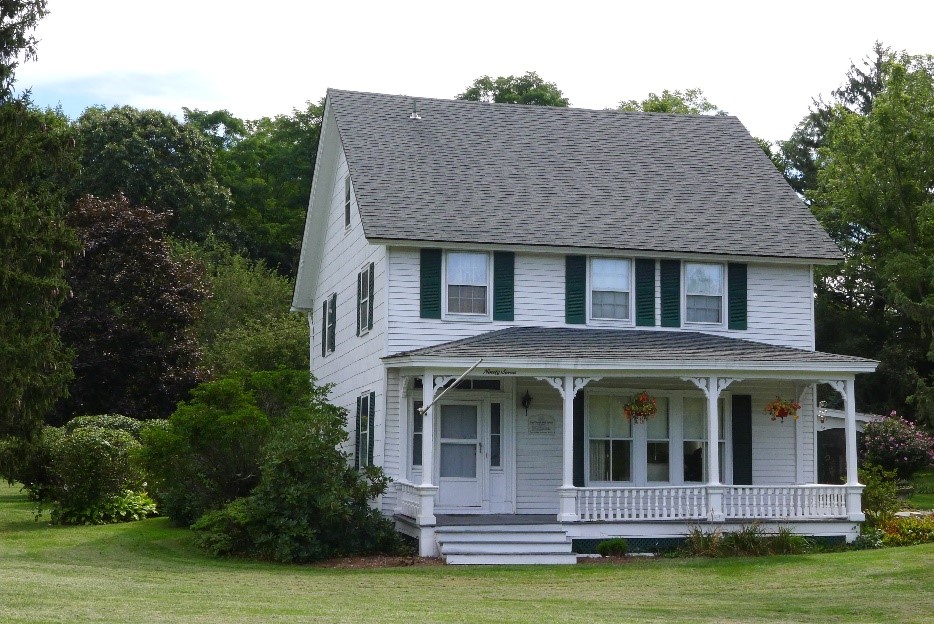
The Tyler House or the Amos and Juliana Smith House
This home is one of the area’s finest examples of a historic American farmhouse. With its gracious, but simple, exterior and a spacious and practical interior, it served as a highly functional living space for the Smith, Swift and Tyler families for over two and a half centuries.
The main front portion of the house dates back to the mid-1700’s and was built from trees found in the area. White oak was used for framing, white pine for the floor boards, and cedar for the roof shingles. Originally, the house had two rooms on the first floor with a central chimney serving both rooms and three bedrooms on the second floor.
In 1878, an addition added a dining room and two additional bedrooms to the house. The kitchen and family (or keeping room) was located in the rear portion of the main house. The parlor was located in the front of the house. In the second half of the 19th century, a summer kitchen was built separate from the house, and eventually attached to the back of the house in the early 20th century. (The original main house, and the subsequent addition and kitchen, are more easily seen when looking at the house from the north side.)
The first inhabitants of this home were Amos Smith and his wife Juliana Hawkins. They raised five children here who were born between 1773-1785. Their son Walter and his wife Elizabeth Ellison also raised five children in this home in the early 1800’s. About 1831, Joseph Swift purchased the house and farm, and along with his wife Amelia Bacon raised nine children here.
Their eldest daughter Eliza married Charles B. Tyler in 1851 and purchased the property in 1854. The Tylers also raised nine children here, born between 1851 and 1879. Two of their unmarried daughters, Annie and Corrine, lived here along with Carrie, a granddaughter of Charles.
Upon Carrie’s death in 1947, the house passed to her half-brother Beverly Griffin Tyler and his wife Blanche Carlton Tyler. When Blanche Carlton Tyler Davis died in 2016, in her 102nd year, ownership passed to the Three Village Community Trust, a non-profit organization for the preservation and protection of land and buildings in the area. Today, most local residents refer to this home as the Tyler House.
The Tyler Brothers General Store stood on the corner of the property where it served the community as both a store and post office for more than 50 years.
